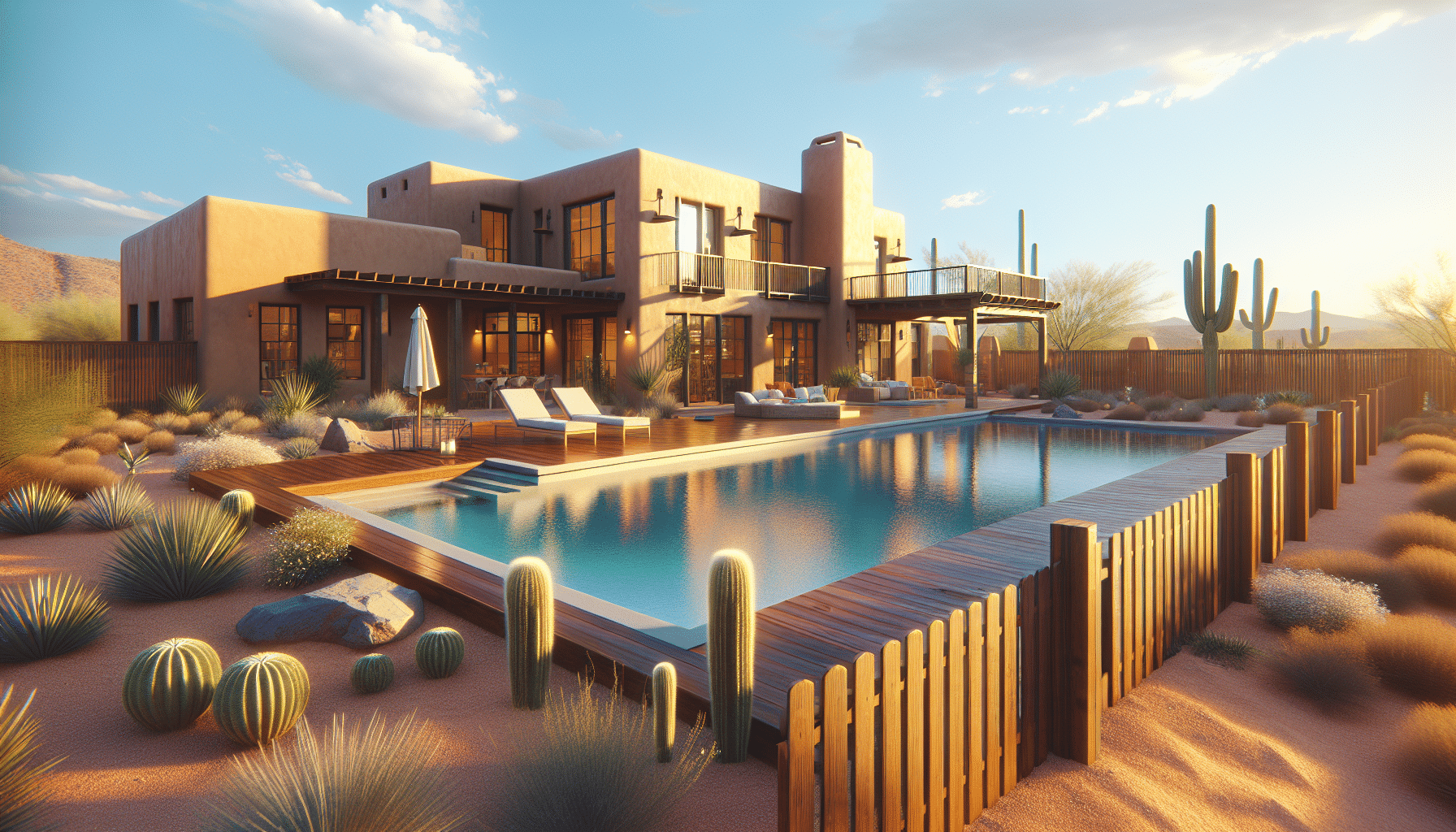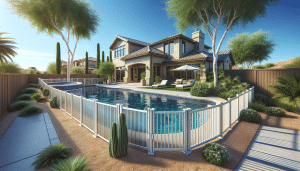Building your own pool fence can seem like a daunting task, especially when faced with the challenge of ensuring safety while maintaining the aesthetic appeal of your backyard paradise. At Pool Safety Fencing, we understand the importance of balancing function and style. This blog post is designed to assist homeowners in navigating the essentials of creating a safe, stylish pool enclosure that meets local guidelines. Our step-by-step guide will equip you with the knowledge and confidence to make informed decisions, ensuring your pool area is secure for family and friends.
Contents
Understanding Local Safety Regulations
Before diving into the design and construction process, it is critical to understand local pool safety regulations. Compliance is not only a legal requirement but also a moral obligation. Pool safety laws vary from state to state, and adhering to them can prevent accidents and possible fines.
Ensure that your pool fence meets height and spacing specifications as required by local authorities. A compliant fence reduces the risk of accidental drownings and injuries, especially for households with children or pets. It is always wise to consult with a local building authority or professional team to confirm that your fence design aligns with statutory safety standards.
Additionally, familiarize yourself with specific requirements regarding fence gates, locks, and overall construction materials. By doing so, you can save both time and resources by avoiding unnecessary alterations post-installation. Staying informed gives you peace of mind, knowing your pool area is both safe and law-abiding.
Selecting the Right Materials
Choosing the right materials for your pool fence is crucial for both durability and appearance. Different materials offer varying levels of strength, maintenance needs, and visual appeal, ensuring you find something that suits your home’s style.
Wood: Known for its classic aesthetic, wood can be a great option, offering both privacy and beauty. However, it may require regular maintenance to prevent rot or weather damage.
Aluminum: Lightweight and rust-resistant, aluminum is a popular choice for pool fences. Its sleek design can complement various landscape styles while ensuring long-lasting durability with minimal upkeep.
Designing for Style and Function
The design of a pool fence should be a thoughtful balance between style and function. No one wants a fence that detracts from the beauty of their pool oasis; however, safety should remain the top priority.
Consider a design that integrates seamlessly with your backyard landscape. Whether it’s a modern glass fence that offers transparency or a traditional wrought iron that enhances elegance, your choice sets the tone for the entire space.
Incorporate child-proof latches and self-closing hinges into your design to boost safety without compromising on style. These elements can be added discreetly, offering a sophisticated finish with enhanced security.
Measuring and Planning
A well-planned layout is key to a successful pool fence installation. Accurate measurements ensure your fence fits perfectly, optimizing both safety and aesthetics.
Start by mapping out the perimeter of your pool area to get an exact idea of how much fencing material you’ll need. This includes taking into account space for gates and any variations in terrain in your backyard.
Planning ahead can also help you foresee any potential landscaping challenges, such as slopes or existing structures, allowing you to adjust your design accordingly. This proactive approach leads to a smoother installation process.
Installing Your Fence
Once your planning is complete, it’s time to install your pool fence. While this can be a DIY project for those who are handy, seeking professional help ensures safety and precision.
Focus first on securing the fence posts, as they form the backbone of your enclosure. Proper alignment and depth are essential for a sturdy, long-lasting fence.
Once the posts are in place, you can begin attaching the fence panels. Ensure that each panel is level and securely fastened. Double-check the locking mechanisms on gates, as these are vital for ensuring pool safety.
Common Installation Mistakes
Avoiding common installation mistakes can save you both time and money. Well-informed homeowners can easily sidestep these pitfalls with a little research and planning.
- Incorrect Measurements: Failing to measure accurately can lead to gaps that reduce safety and increase costs. Double-check all measurements before purchasing materials.
- Ignoring Terrain Variations: Not accounting for slopes or undulations can cause installation complications, leaving unsafe gaps beneath the fence panels.
- Inadequate Post Depth: Insufficient anchoring depth can compromise the fence’s stability, especially in adverse weather conditions. Follow manufacturer’s guidelines for post depth.
- Overlooking Gate Functionality: A gate that doesn’t self-close or latch securely is ineffective. Ensure all gate components meet safety standards.
- Using Non-Durable Materials: Selecting inferior materials may result in quicker deterioration. Choose one that can withstand local weather while maintaining curb appeal.
Adding Child Safety Features
Safety features designed specifically for children can significantly reduce the risk of accidents. Beyond just a safety fence, we suggest implementing additional protective measures.
A safety gate alarm that sounds when the gate is opened adds an extra layer of vigilance. This system alerts you when there is unsupervised access to the pool area.
Consider non-climbable fence designs to prevent adventurous little ones from using the fence as a jungle gym. Smooth, vertical bars with no horizontal footholds minimize this risk.
Maintaining Your Pool Fence
A well-maintained pool fence not only prolongs its lifespan but also ensures ongoing safety. Routine checks can identify potential issues before they become significant problems.
Perform regular inspections to detect signs of wear or damage. Hinges, locks, and fence panels should be inspected biannually to ensure they are in working order.
Materials like wood may require resealing or repainting annually to guard against weather damage. Aluminum and wrought iron fences typically demand less upkeep but should still be monitored for rust and loose bolts.
Enhancing Privacy and Aesthetics
After securing your pool area, you might want to enhance the privacy and beauty of your backyard retreat. There are many ways to achieve this without sacrificing safety.
Consider installing privacy screens or using climbing plants like ivy to add a natural barrier. These additions can create a tranquil oasis while providing the necessary seclusion.
Decorative elements, such as stylish post caps or integrated lighting, can enhance the overall aesthetics of your pool fence. These small touches elevate your backyard environment, making it a serene extension of your home.
Ultimately, a well-designed pool fence combines safety, style, and compliance. If you’re ready to enhance your pool’s safety with a custom fence installation, contact us at Pool Safety Fencing by phone 480-771-8026 or request a free quote.




